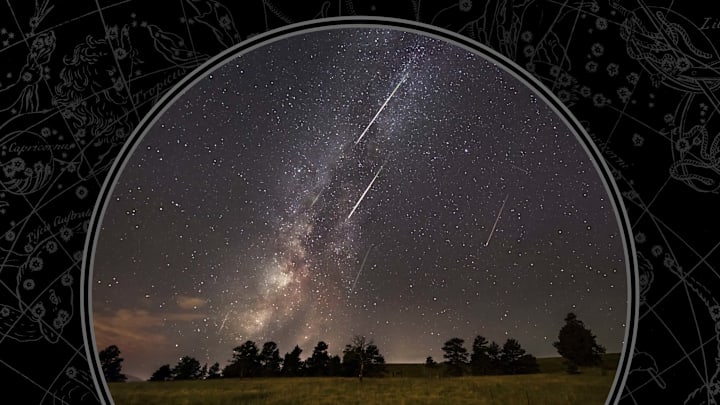The Leonid meteor showers are highly anticipated among astronomy fans. The November meteor blitz occasionally turns into a storm that produces some of the fastest, brightest, and most abundant shooting stars of the year. Here’s what you need to know to witness the dazzling phenomenon in 2023.
What Is the Leonid Meteor Shower?
The Leonids are a product of the comet 55P/Tempel-Tuttle. Every year in November, our planet passes through the comet’s tail and hunks of comet debris burn up in our atmosphere. The result is a night sky peppered with shooting stars. The shower’s name comes from the constellation Leo, which the meteors appear to radiate from as they streak across the dome of the sky.
The shower has been known to strengthen into a full-blown storm on occasion. A meteor storm is a shower that produces an exceptional number of shooting stars, usually more than 1000 per hour. The meteors that fall during a Leonid storm are also bright, colorful, and incredibly fast. Storms from Comet 55P/Tempel-Tuttle are recorded every 33 years or so, with the last one occurring in 2001.
When Is the Next Leonid Meteor Shower?
The Leonid meteor shower in 2023 won’t reach storm levels, but it’s still worth checking out. Activity peaks on the night of Friday, November 17, and early in the morning of Saturday, November 18. The shower can produce up to 15 meteors per hour at its peak. The first quarter moon on November 20 won’t outshine the shooting stars, so viewing in 2023 should be good.
For your best shot at catching the spectacle, find a remote area with minimal light pollution and give your eyes plenty of time to adjust to the dark. The Leonids will be more visible in the Northern Hemisphere, and the best time to see them is in the hours before dawn.
A version of this story was published in 2021; it has been updated for 2023.
